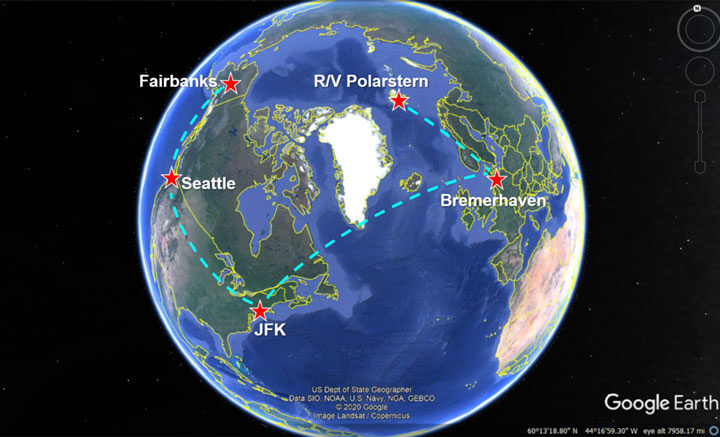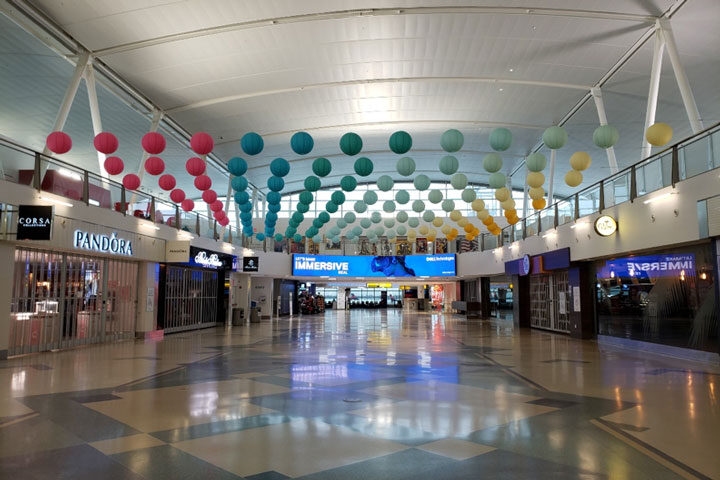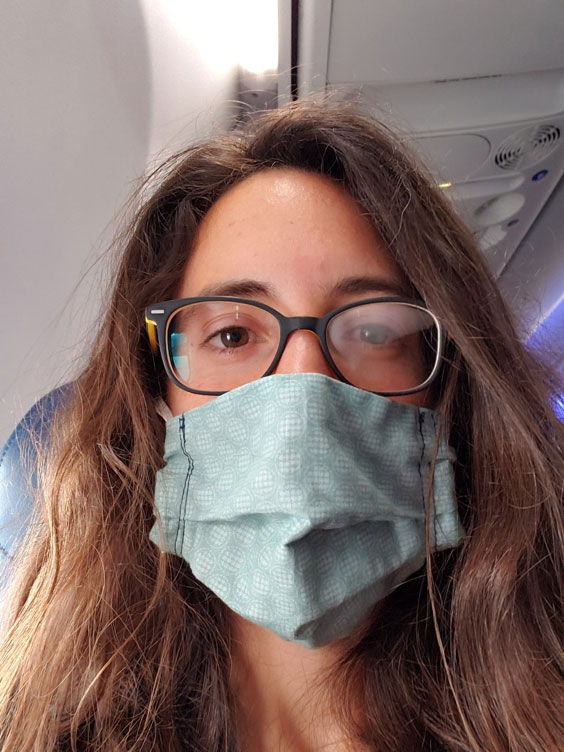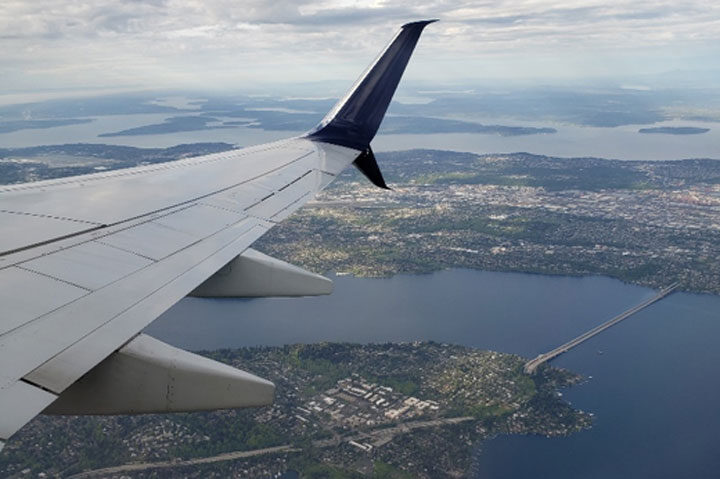Hi there, from 39,000’. I’m Melinda Webster, a sea ice geophysicist at the University of Alaska Fairbanks’ Geophysical Institute. I’m on my way to the Multidisciplinary drifting Observatory for the Study of Arctic Climate (MOSAiC) expedition as the Ice Team Lead for Leg 4. Funded under NASA’s New Investigator Program, I’ll be using MOSAiC data as the ultimate blueprint to evaluate and extend the seasonal capability of ICESat-2 data for sea-ice research.
About 1.5 months ago, I was packed, medically cleared, and ready to fly to the R/V Polarstern from Alaska via Svalbard for the MOSAiC expedition. About 1.4 months ago, COVID-19 was declared a pandemic. Plans set so carefully into place vaporized within a matter of days.

After a false start, packing for a 4+ month expedition gets much easier. You have time to tie up loose ends, have more opportunities to talk with loved ones, and reluctantly finish off projects that were being procrastinated. And, in this case, enjoy the return of spring before heading into a world where the vibrant colors of budding trees and flowering plants are nowhere near. Instead, the Arctic sea-ice cover is a stunning realm with every blue and grey tone imaginable, and is certainly no less beautiful than springtime on land.
The COVID-19 disruptions have also given the MOSAiC Project Board and funding agencies time to compose a logistical masterpiece centered on safely continuing the MOSAiC expedition during a pandemic. Part of this masterpiece ensures that MOSAiC participants travel as safely as possible to the ship to successfully rotate the crew and scientists. Through the National Science Foundation, each U.S. MOSAiC participant for Leg 4 received a care package of personal protective equipment: masks, gloves, hand sanitizer, disinfectant wipes, disposable thermometers, and more. So far, my flights have been at least 50% empty, leaving ample breathing room, and 99% of people have donned masks.



Upon our arrival in Hamburg, we’re to be transported to a hotel in Bremerhaven to start a 2-week quarantine and a series of COVID-19 tests. Once clearing quarantine, tests, and safety training, we’ll take two research vessels from Bremerhaven to Isfjord, the main fjord in Svalbard that leads to Longyearbyen. Although Norway is closed to visitors, we’ll meet the Polarstern in this fjord to carry out the rotation without needing to step foot on land. I anticipate the experience will be overwhelmingly joyful. Our colleagues who set out for a 2-month expedition in February were instead given a 5-month tour due to the pandemic. I’m looking forward to relieving them of their work and continuing the time-series that will make MOSAiC an invaluable expedition and improve our use of ICESat-2 data.




God Speed to you and your colleagues! Prayers for a safe and successful expedition.
Keep the notes & pics coming – how interesting to see what most of us can’t. It’s also good to see pics of what’s going on in the rest of the world (especially outside my little orbit of my neighborhood). Thank you for your work and your sharing of it.